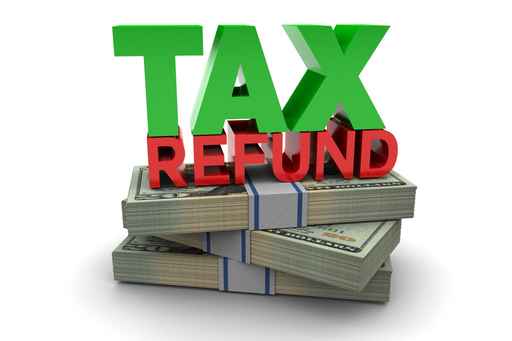Tax deductions for homeowners remain largely unchanged for the 2014 tax year. However, Congress does make changes from year to year, so make sure you are aware of the current tax laws.
Disclaimer: This is only general information about tax law. If you have questions or unusual circumstances, you need to seek out the advice of a tax professional.

- Mortgage interest deduction remains the number one tax deduction for homeowners. This applies to primary home values up to $1 million. Congress has been looking at limiting this deduction for high-income earners but has not yet taken action. Those with incomes above $400,000 may see a limit placed on them in the future.
- Home improvement loans have a limited deduction. If you take out a loan secured by the equity of your home, you can deduct the interest paid in many cases. These include adding an addition and updating most components of the house. However, routine maintenance such as replacing carpets or painting are not entitled to an interest deduction.
- Mortgage point deduction. These are also known as origination fess and are generated when you first buy the home or when you refinance. It's a fee charged by mortgage underwriters to originate the loan. A 1 percent origination fee on a $100,000 house would be $1,000. For an original loan, the entire fee can usually be written off for the tax year the purchase was made. For refinance loans, the fee can be written off in proportion to the amount paid during the tax year.
- Energy efficiency tax credits. Improved insulation, more energy efficient windows, furnaces, hot water heaters, and the like gain the homeowner a tax credit. This is not a reduction in your taxable income. Instead, it's a full credit that lowers your tax bill by the full amount of the credit. Generally, the credit is 10 percent of the total cost with a cap of $500. There are also caps for specific items such as $150 cap for a furnace.
- Private mortgage insurance. This one is often overlooked by homeowners that might not even be aware they are paying private mortgage insurance. People that make less than a 20 percent down payment are typically required to purchase private mortgage insurance that can cost a couple of hundred dollars each month. This cost of homeownership is deductable if the loan originated after January 1, 2007. However, there are limits. For households with an income between $100,000 and $109,000, the deduction is phased out at 10 percent for every $1,000 in income above $100,000 and not available above $109,000. Something else to consider with private mortgage insurance is that you can stop paying it when your equity reaches 20 percent of the home value.
- Home sale profit. If you sold a primary residence in 2014, an individual is exempt from paying capital gains on the first $250,000 of profit. For a couple the limit is $500,000.
- Selling cost deductions. If your profit from a sale exceeds $250,000 for an individual or $500,000 for a couple there still might be deductions to reduce your tax bill. You can deduct costs associated with the sale such all fees paid at closing and capital improvements you made while you owned the home. Other possible deductions include damage repairs and marketing costs to sell the home.
- Property tax deduction. This deduction needs to be carefully calculated to get it correct. You likely pay your property taxes into an escrow account controlled by your mortgage holder. They collect on a monthly basis but typically pay the tax semi-annually. What you paid into the escrow account is not the same as what your mortgage company paid the local tax office on your behalf. You are only entitled to write off the actual tax paid.
- Home office deduction. You can write off the expenses associated with a home business office that you use exclusively for business. Starting in 2013, there is a simplified procedure that allows you to deduct $5 per square foot and up to 300 square feet.
- Debt forgiveness. Until 2007, the IRS considered any debt that was forgiven to be income that taxes were due on. The Mortgage Debt Forgiveness Relief Act of 2007 canceled this debt tax for the short sale of a primary residence up to $1 million for individuals and $2 million for couples. This may also apply in the case of a foreclosure when the mortgage company does not recover the full loan amount and does not require the ex-homeowner to repay the balance owed.
Please leave a comment if this article was helpful or if you have a question.
 Author bio: Brian Kline has been investing in real estate for more than 30 years and writing about real estate investing for seven years. He also draws upon 25 plus years of business experience including 12 years as a manager at Boeing Aircraft Company. Brian currently lives at Lake Cushman, Washington. A vacation destination, a few short miles from a national forest in the Olympic Mountains with the Pacific Ocean a couple of miles in the opposite direction.
Author bio: Brian Kline has been investing in real estate for more than 30 years and writing about real estate investing for seven years. He also draws upon 25 plus years of business experience including 12 years as a manager at Boeing Aircraft Company. Brian currently lives at Lake Cushman, Washington. A vacation destination, a few short miles from a national forest in the Olympic Mountains with the Pacific Ocean a couple of miles in the opposite direction.
Brian Kline has been investing in real estate for more than 30 years and writing about real estate investing for seven years with articles listed on Yahoo Finance, Benzinga, and uRBN. Brian is a regular contributor at Realty Biz News
Latest posts by Brian Kline
(see all) Author bio: Brian Kline has been investing in real estate for more than 30 years and writing about real estate investing for seven years. He also draws upon 25 plus years of business experience including 12 years as a manager at Boeing Aircraft Company. Brian currently lives at Lake Cushman, Washington. A vacation destination, a few short miles from a national forest in the Olympic Mountains with the Pacific Ocean a couple of miles in the opposite direction.
Author bio: Brian Kline has been investing in real estate for more than 30 years and writing about real estate investing for seven years. He also draws upon 25 plus years of business experience including 12 years as a manager at Boeing Aircraft Company. Brian currently lives at Lake Cushman, Washington. A vacation destination, a few short miles from a national forest in the Olympic Mountains with the Pacific Ocean a couple of miles in the opposite direction.